Refractive Issues
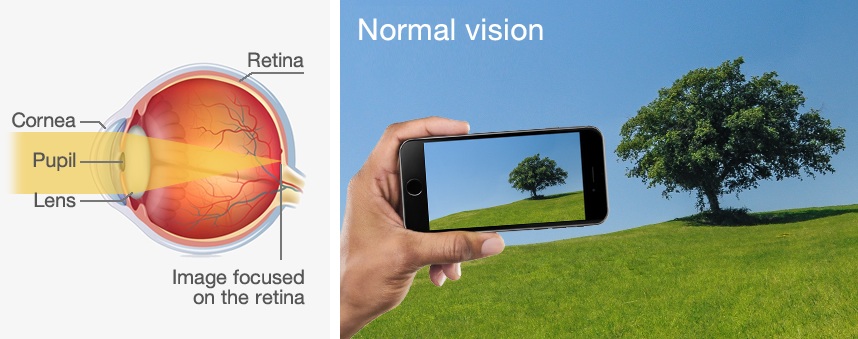
Normal vision or Emmetropia
The optical principles behind the human eye are similar to those in a camera. The cornea and lens assume the role of the camera lens. They bundle the parallel incident light rays and determine the focal distance. In an eye with a normal vision, the light rays are focused so that the focal point is on the retina itself. The result is a sharply focused image for both near and far objects.
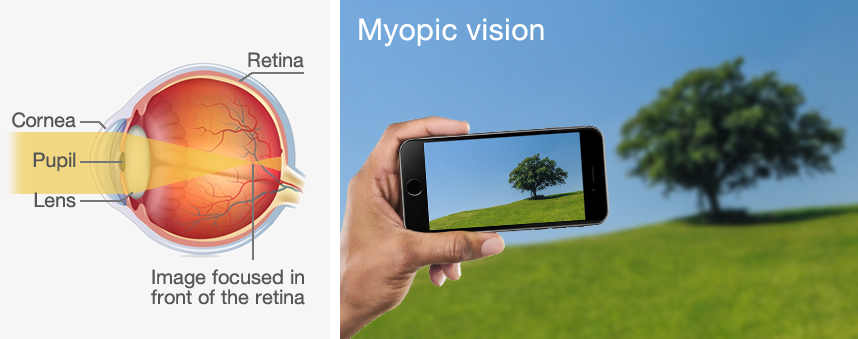
Nearsightedness or Myopia
Nearsightedness is the most common vision defect worldwide. Almost half the global population is – to varying degrees –affected by it. For nearsighted people, the eye is too long in relation to its refractive power. Light rays are refracted by the cornea and the lens in such a way that the focal point lies in front of the retina. By the time the rays hit the retina itself, they are already drifting apart. The result is a retinal image which is out of focus for distant objects.
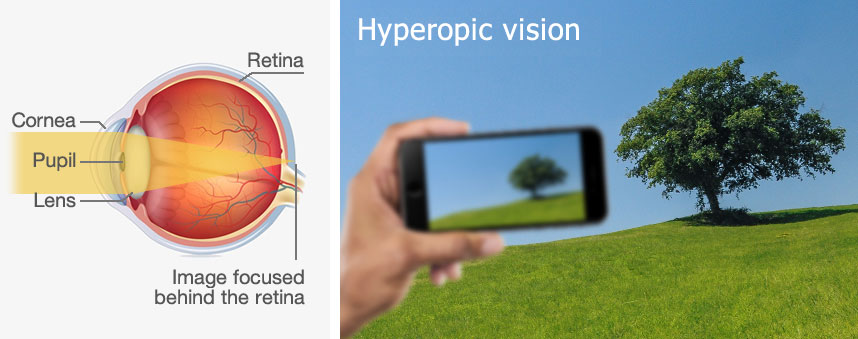
Farsightedness or Hyperopia
For farsighted people, the eye is too short in relation to the refractive power. Light rays are refracted by the cornea and the lens in such a way that the focal point is behind the retina. A blurred image is then created because the rays are not yet focused when they hit the retina. Up to a certain age this lack of refractive power can be naturally compensated by changing the shape of the lens.
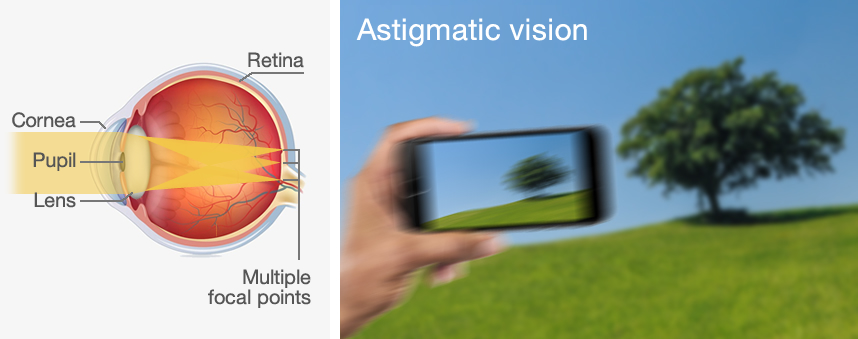
Astigmatism
In case of astigmatism, the curvature of the cornea is uneven. The resulting refraction is creation of multiple focal points. Both near and far objects appear skew or distorted. Astigmatism can occur independently or in combination with farsightedness or nearsightedness.
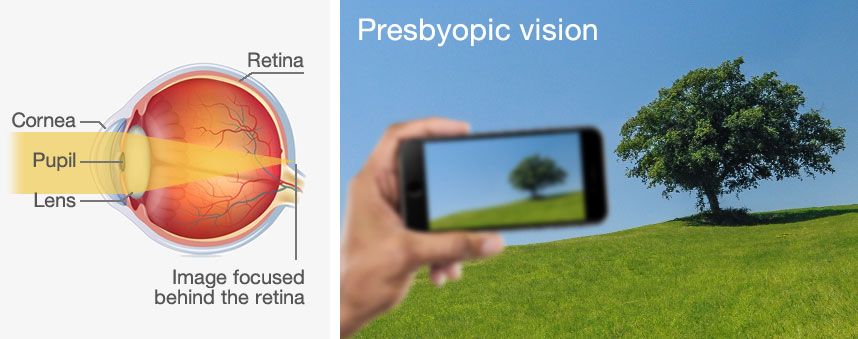
Presbyopia
Unlike other refractive errors, presbyopia is caused by aging process and often occurs around the age from 45 years-old, when eye accommodative strength is decreasing. Over time, eye lens indeed gradually loses its flexibility and focus on near objects becomes more difficult.





